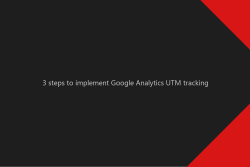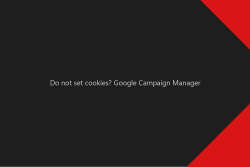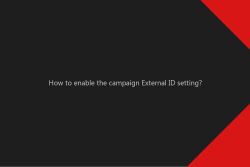3 steps to implement Google Analytics UTM tracking
Learn how to implement tracking campaign tracking to let you track your campaigns in Google Analytics. Why should you use campaign tracking parameters? Tracking parameters...
Filter by Category
Filter by Author

Learn how to implement tracking campaign tracking to let you track your campaigns in Google Analytics. Why should you use campaign tracking parameters? Tracking parameters...
Posted by Wojtek Andrzejczak

Google Campaign Manager has multiple options and settings. But there is one fascinating one. With this option, you will stop using Cookies for your campaigns.
Posted by Wojtek Andrzejczak

How to enable campaign External ID setting under the Google Campaign Manager campaign? And why this option is so important?
Posted by Wojtek Andrzejczak

Google Enhanced attribution is an answer for Apple Intelligent Tracking Prevention (ITP). But how does it actually work?
Posted by Wojtek Andrzejczak

8 implementation facts you should know while implementing Google Floodlight conversions with Global Site Tag.
Posted by Wojtek Andrzejczak

Google Campaign Manager for all new accounts sets the default time zone as New Your -5/-4h. If affects all start and end dates in all our campaigns.
Posted by Wojtek Andrzejczak
Learn how to implement tracking campaign tracking to let you track your campaigns in Google Analytics.
Contents
Tracking parameters attached to the campaign landing page URL’s allow us to segment campaign users and track their behavior over time. So marketers could also estimate ROI/ROAS of the campaigns and evaluate their value.
Structure and purpose of all parameters I’ve already described in the 5 facts about UTM tracking parameters • Google Analytics article.
It is essential to have UTM parameters in the first place. Otherwise, we can have a situation wherein Google Analytics. You will find an extraordinary-looking data in the Acquisition section. For example, you can like campaign Source/Medium traffic aggregated under DFA/CPM. More about this problem, you can learn in the Google Analytics • DFA/CPM • campaign traffic problem article on my blog.
Google Campaign Manager offers a few possible ways how to implement our UTM parameters.

In the case of the first option, if your creative URL already contains some parameters inside, Google will combine all URL parameters and make sure the URL will be valid.
For the second option, you will need to combine all parameters by your self which is highly possible to make a mistake with the use of “&” and “?” characters.
Enhanced attribution tracking is an additional option you should enable for each advertiser in the Google Campaign Manager.

When you enable this option, Google will attach an additional URL parameter “dclid,” which allows Google Analytics and Google Floodlight pixel to identify the user who has interacted (clicked) with your ad.
The concept of DCLID and Enhanced attribution tracking is directly linked with the use of the 1st party Cookies. The story had its beginning a few years ago when Apple introduced the first version of the ITP. More details you can find in the Google response to Apple ITP • Enhanced attribution article.
As soon as your campaign start, you will be able to find detailed information in the Google Analytics under Acquisition – All Traffic – Source/Medium.
Let’s take example url like link bellow:
https://wojtek.ch/?utm_source=linkedin&utm_medium=post&utm_campaign=standardAs soon as your campaign starts, you will be able to see simmilar results like on the image bellow.

Subscribe to our newsletter!

Plausible Analytics is one of the new generation projects build around Privacy First/Cookie-less approach. It is an interesting alternative for Google Analytics users who need web...

8 implementation facts you should know while implementing Google Floodlight conversions with Global Site Tag.